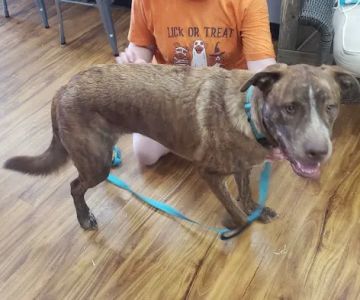Training Your Dog to Be Comfortable with a Collar
As a dog owner, one of the first steps in teaching your dog to be well-behaved is ensuring that they are comfortable with basic accessories, such as a collar. A collar is not only essential for identification but also a key tool for training and walking your dog. However, for some dogs, the idea of wearing a collar may be foreign or uncomfortable. In this article, I’ll share some of the most effective tips I’ve learned for training your dog to be comfortable with wearing a collar.
1. Start Early: Introduce the Collar Gradually
The earlier you introduce your dog to wearing a collar, the easier the process will be. If you have a puppy, this is the perfect time to begin the training. However, it’s never too late to train an older dog to be comfortable with a collar. The key is to take things slow. Begin by letting your dog sniff the collar before you put it on them. Make sure the collar is light and not too tight, and allow your dog to get used to the texture and feel of it. You can even place the collar near their food bowl or toys to create positive associations.
2. Positive Reinforcement: Reward the Good Behavior
Positive reinforcement is one of the most effective ways to train your dog. Each time your dog allows you to put on the collar without resistance, reward them with praise or a treat. This helps your dog associate wearing the collar with something positive. Over time, they will understand that wearing the collar isn’t a negative experience. I remember when my dog first wore a collar, I would give him treats every time he wore it for even a few minutes. Slowly, he grew accustomed to it.
3. Start with Short Sessions
Initially, it’s important to keep the collar-wearing sessions brief. Start by putting the collar on your dog for just a few minutes and gradually increase the duration as they get more comfortable. If your dog starts to scratch or paw at the collar, it’s okay to remove it for a while and try again later. The goal is to make your dog feel relaxed, so don’t force the collar on if they are clearly stressed.
4. Distraction Techniques: Keep Them Busy
If your dog seems particularly bothered by the collar, try distracting them with their favorite toys or a walk around the yard. Engaging their mind and body can help distract them from the sensation of the collar and help them adjust more easily. I’ve found that a game of fetch or a treat puzzle keeps my dog focused on something other than the collar, which helps with the transition.
5. Make the Collar a Part of Their Routine
Once your dog is comfortable wearing the collar, incorporate it into their daily routine. Make sure the collar stays on for longer periods, such as during walks, playtime, and even during their meals. The more they wear it, the more normalized it becomes. I also recommend checking the fit of the collar regularly to ensure it’s not too tight or too loose. It should fit comfortably around your dog’s neck, with enough room to slip two fingers underneath.
6. Be Patient and Consistent
Training takes time, and the key to success is patience and consistency. Some dogs may take longer to get used to wearing a collar, while others may adjust quickly. The process can take several days to a few weeks, depending on the dog. The most important part is not to rush. Consistency in training and daily practice will help your dog get used to the collar at their own pace.
7. Consider Comfort and Fit
One of the main reasons dogs resist wearing a collar is discomfort. It’s crucial to choose the right collar for your dog. Look for a collar that’s soft, lightweight, and made of breathable material. Collars with adjustable straps allow you to customize the fit, which is particularly important for comfort. As your dog grows or their coat changes, you may need to adjust the collar size to prevent discomfort.
Remember, a collar isn’t just a tool for training or identification; it’s a part of your dog’s daily life. Ensuring they feel comfortable wearing one will make walks and outdoor adventures much more enjoyable for both of you.
If you're still struggling with collar training, consider seeking the advice of a professional dog trainer who can offer personalized guidance. At Hidden Brook Veterinary, we offer expert advice and services for pet care to help make your dog’s collar training experience as smooth as possible.











